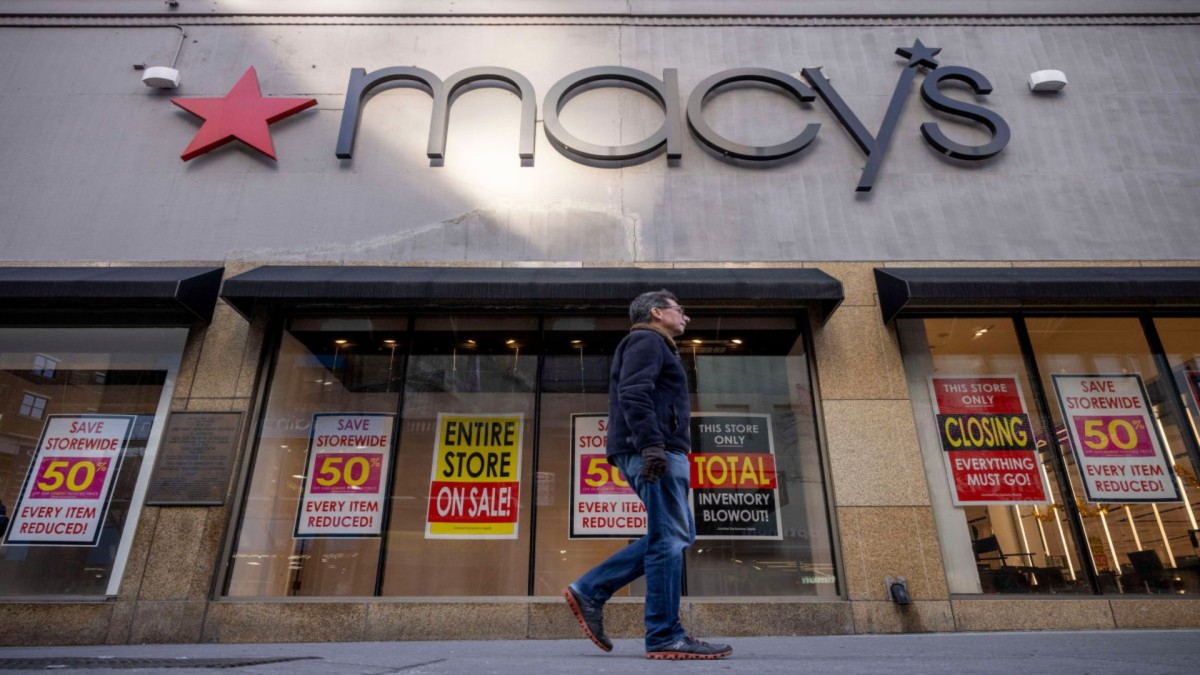In an era when speed and convenience have become major factors in retail, Macy’s is making a bold move. It has unveiled a massive new addition to modernize operations, one that could win back customers and reshape its business forever.
Macy’s has opened a 1.4 million-square-foot automated warehouse in China Grove, North Carolina, its largest and most technologically advanced facility yet.
First announced in 2022, the warehouse is designed to accelerate online order fulfillment, improve accuracy, and ensure stores remain well-stocked to meet the growing demands of the retailer’s omnichannel business.
This massive center has direct-to-consumer fulfillment capabilities, allowing Macy’s to hold more inventory and consolidate orders more efficiently. Once fully operational, it’s expected to handle nearly 30% of the company’s digital supply chain capacity.
The ultimate goal is to deliver online orders faster and in fewer shipments, all while boosting sales, aiming to reverse Macy’s 2.5% year-over-year decline in net sales as reported in the second quarter of 2025.
“This 1.4 million square foot facility will leverage automation and streamline inventory fulfillment and management across all of our nameplates, creating greater supply chain efficiencies at a lower cost,” said Macy’s CEO Tony Spring in an earnings call.
This $548 million investment comes as Macy’s has been consolidating its operations, closing a distribution center, two third-party logistics facilities, and more than a third of its stores over the past decade.
In early 2024, the retailer revealed plans to shutter around 150 underperforming stores by 2026, including 66 closures this year alone.

Image Source: Yuki Iwamura/Bloomberg via Getty Images
Macy’s makes strategic shift
Struggling with ongoing sales declines and store closures, Macy’s (M) launched its “Bold New Chapter” strategy, a drastic transformation to win back customers and achieve sustainable, profitable growth.
The focus has shifted to its remaining 350 stores, particularly its higher-end and more profitable brands, including Bloomingdale’s and Bluemercury.
Related: Dick’s Sporting Goods partners with Lululemon rival
As part of its reinvention, Macy’s is reducing its presence in traditional malls and opening 30 smaller-concept stores over the next two years to better align with consumers’ shopping preferences.
The company has also revamped 125 existing stores, enhanced product assortments, strengthened brand partnerships, and invested in a better in-store experience.
Amazon sets the bar for online retail and delivery services
Macy’s renewed focus on efficiency and speed responds to e-commerce giants like Amazon (AMZN), which have reshaped consumer expectations of the retail experience. Amazon has invested heavily in its delivery network, expanding fulfillment centers, testing drones, and even developing AI-powered robotics to accelerate operations.
With same-day, one-day, and two-day delivery options, Amazon continues to raise the bar for online retail logistics. To stay competitive, Macy’s has stepped up its own fulfillment efforts.
“We have worked hard to create a flexible supply chain that allows us to mitigate the impact from potential disruptions to global trade and tariff activity,” said Macy’s CFO Adrian Mitchell in an earnings call in March.
Fast delivery becomes a key growth driver
The rise in popularity of online shopping continues to reshape consumer habits and transform retail.
E-commerce is projected to account for nearly 35% of all retail sales by the end of 2025, according to Metrobi.
This shift is beginning to affect brick-and-mortar shops, creating a wide discrepancy between store closures and openings. According to CoreSight Research, retailers across sectors announced 67% more store closures in 2025 compared to the year prior.
At the same time, delivery expectations continue to rise, McKinsey & Company found that the average parceldelivery speed has accelerated by about 40%, dropping from 6.6 days in the first quarter of 2020 to 4.2 days in the second quarter of 2023.
This change has been driven by investments in shorter and smarter logistics networks.
“Shifts in consumer preferences present an opportune moment for both shippers and providers to reassess their approaches,” noted McKinsey & Company. “Decisions regarding cost, speed, reliability, transparency, flexibility, and sustainability can all be reevaluated. Getting value propositions right will rely on understanding the priorities of specific customers, as there is no one-size-fits-all solution.”
Related: Struggling mall retailer makes massive change to how it sells clothes
#Macy039s #biggest #move #rival #Amazon